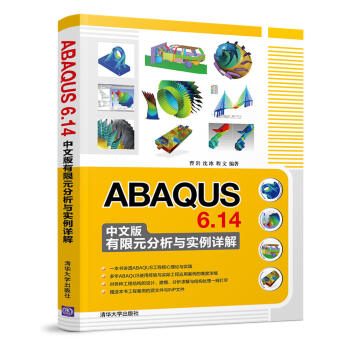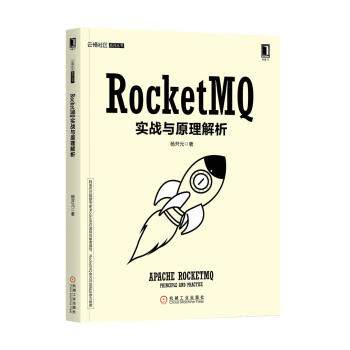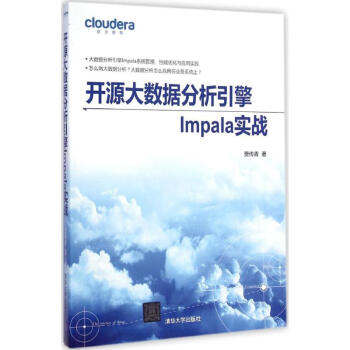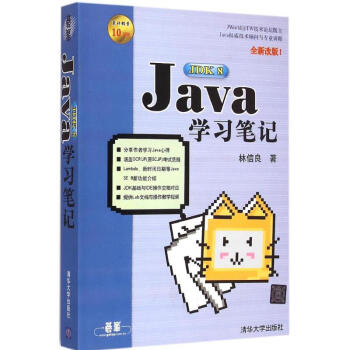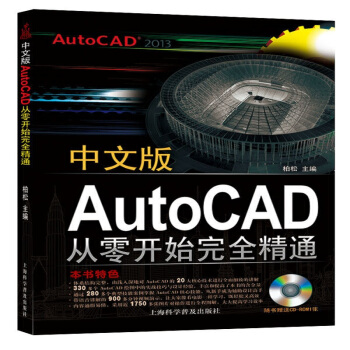具体描述
内容简介
《ABAQUS 6.14中文版有限元分析与实例详解》全面系统地介绍了ABAQUS 6.14软件的使用,包括静力学分析、动力学分析、接触分析、结构热分析、模态分析、屈曲分析、拓扑优化及形状优化等常见的工程领域实例中的建模、分析及后处理等内容。
《ABAQUS 6.14中文版有限元分析与实例详解》从实际应用出发,侧重于ABAQUS的实际操作和工程问题求解,针对各个相关的知识点进行了详尽的讲解,与相应的案例紧密结合,使读者能够快速、深入地掌握ABAQUS 6.14的相应功能,每个实例都以图文并茂的形式详细介绍了ABAQUS 6.14软件的操作流程。
《ABAQUS 6.14中文版有限元分析与实例详解》赠送书中各个工程案例的源文件及INP文件,帮助读者在学习过程中进行操作练习或参考。
《ABAQUS 6.14中文版有限元分析与实例详解》结构严谨,重点突出,条理清晰,非常适合ABAQUS 6.14初级和中级用户使用,也可作为高职院校、大中专院校及社会相关培训机构的教材。
前言/序言
前 言
ABAQUS是工程应用领域功能最强大的有限元分析软件之一,融结构、热力学、流体、电磁、声学和爆破分析于一体,具备强大的前后处理及分析计算能力。特别是在非线性分析领域,它能够同时模拟结构、热、流体、电磁等多物理场的耦合效应,具备了解决复杂工程力学问题的能力。
本书以ABAQUS 6.14版本为软件平台,以大量常见的工程实例为依托,对运用ABAQUS软件处理工程问题的具体方法与步骤进行了详细的讲解。对于广大的ABAQUS用户来讲,特别是初学者,都面临着这样一个问题:如何快速有效地理解和掌握ABAQUS的分析功能和操作方法?而本书的目的意在使读者系统地掌握ABAQUS的使用方法,能够对各种工程结构进行设计、建模、分析求解与结果处理等工作。
本书特点
? 由浅入深,由表及里:本书以初、中级读者为对象,首先对ABAQUS软件的基础操作进行了讲解,再以ABAQUS在各个工程领域中的典型案例进行详细的介绍,帮助读者尽快掌握ABAQUS软件的入门操作。
? 细致入微,步骤详尽:本书结合了作者多年的ABAQUS系列软件使用经验与实际的工程应用案例,将ABAQUS软件的使用方法详尽地介绍给读者。通过对分析过程中操作步骤的详尽讲解,以相应的图片作为辅助,使读者一目了然,从而快速掌握书中所讲内容。
? 案例典型,简单易懂:对学习者而言,对实际工程案例的分析学习是掌握ABAQUS的最佳方式。而按照本书中综合应用案例的操作过程进行讲解,可以使读者轻易地复现案例分析过程,详尽透彻地体验ABAQUS在各领域中的工程问题解决方法。
主要内容
本书章节主要分为两个部分:ABAQUS基础部分和工程案例讲解部分,其中基础部分包括第1~4章,案例讲解部分包括第5~12章。
第1章 主要介绍了ABAQUS软件的使用环境、文件系统和新版本的特点等。
第2章 简单介绍了ABAQUS软件的主要模块,对其分析步骤进行了简单说明。
第3章 对ABAQUS软件中的各个功能模块进行了详尽的讲解。
第4章 对ABAQUS软件中的INP文件和单元类型进行了简单介绍。
第5章 对静力学分析进行了介绍,并详细讲解了线性与非线性静力学分析实例。
第6章 对动力学分析的主要类型进行了介绍,并对线性与非线性动力学问题进行了详细讲解。
第7章 通过密封法兰和塑性加工过程仿真两个实例,对接触问题进行了详细讲解。
第8章 首先简单介绍了热学分析的主要内容,其次通过对金属散热管和刹车盘的分析对软件操作过程进行了详细介绍。
第9章 通过圆盘结构动力学和弹丸侵蚀靶体过程的分析,对ABAQUS/Explicit的显式分析进行了讲解。
第10章 首先介绍了屈曲分析过程的基本知识,其次通过案例给出了解决线性屈曲问题的操作方法。
第11章 对优化设计的基础和流程进行了清晰的介绍,并分别对U型夹的拓扑优化以及S型压缩弹簧片的形状优化过程进行了详细讲解。
第12章 主要对ABAQUS用户子程序的基本知识进行了介绍,对调用用户子程序进行分析的过程进行了讲解。
本书赠送资源
读者可扫描书中二维码,下载本书赠送资源,其内容包含了本书中各个工程案例的源文件及INP文件,读者可以充分利用这些资源提高学习效率。
本书作者
本书主要由曹岩、沈冰、程文编著,赵迪、田良、雷鸣宇、李强、石亚茹、孙毓鸿、汪晶、刘贵祥、张苗苗、陈蓓、马未未、张娜娜、王永明、仵宁飞、韦婉钰也参与了部分章节的编写工作。虽然作者在本书的编写过程中力求将内容叙述得准确详尽,但由于水平有限,书中尚有欠妥之处在所难免,望各位读者和同仁能及时指出,共同促进本书的质量提高。
编者
Finite Element Analysis: Principles and Applications in Engineering Simulation Introduction The advent of digital computing has revolutionized the field of engineering, providing powerful tools for design, analysis, and optimization. Among these tools, Finite Element Analysis (FEA) stands out as a cornerstone for understanding and predicting the behavior of complex physical systems. FEA is a numerical method that discretizes a continuous physical domain into a finite number of smaller, interconnected elements. By solving a system of equations governing the behavior of these elements, engineers can gain deep insights into stresses, strains, displacements, thermal distributions, and other critical performance parameters. This approach allows for the simulation of a wide range of physical phenomena, from the structural integrity of bridges and aircraft to the heat transfer in electronic components and the fluid flow in biological systems. This book delves into the fundamental principles of Finite Element Analysis, equipping readers with a comprehensive understanding of its theoretical underpinnings and practical applications. It is designed for engineers, researchers, and students seeking to master the art and science of FEA, enabling them to tackle intricate engineering challenges with confidence. We will explore the mathematical foundations of the method, the formulation of element equations, and the assembly and solution of global systems. Furthermore, the book will guide readers through the practical aspects of setting up, running, and interpreting FEA simulations across various engineering disciplines. Chapter 1: The Fundamentals of Structural Mechanics and Continuum Mechanics Before diving into the specifics of FEA, it is crucial to establish a solid understanding of the underlying physical principles that FEA aims to model. This chapter revisits the essential concepts of structural mechanics and continuum mechanics. We will begin by reviewing the fundamental laws governing the behavior of materials under applied loads, including Hooke's Law, stress-strain relationships, and the principles of elasticity and plasticity. The concept of strain as a measure of deformation and stress as the internal resistance to deformation will be thoroughly explained. We will then delve into continuum mechanics, which treats materials as continuous media, ignoring their atomic or molecular structure. This abstraction simplifies the analysis of macroscopic behavior. Key concepts such as stress tensors, strain tensors, and constitutive models will be introduced. The governing equations of equilibrium and compatibility will be presented, forming the basis for many FEA formulations. We will also discuss different types of stress and strain states, including uniaxial, biaxial, and triaxial loading, and their implications for material behavior. Understanding these foundational principles is paramount to appreciating how FEA discretizes and solves these complex relationships. Chapter 2: The Finite Element Method: Discretization and Element Formulation This chapter marks the formal introduction to the Finite Element Method. We will explore the core idea of discretizing a continuous domain into smaller, manageable elements. The process of meshing, where the problem domain is divided into a network of nodes and elements, will be discussed in detail. Various types of elements will be presented, including one-dimensional (bar and beam elements), two-dimensional (triangular and quadrilateral elements), and three-dimensional (tetrahedral and hexahedral elements) elements. The selection of appropriate element types for different geometries and analysis types will be addressed. The heart of FEA lies in the formulation of element equations. We will investigate how to derive the stiffness matrices for different element types using various approximation techniques. The displacement-based formulation, a common approach, will be explored, where nodal displacements are used as primary unknowns. The concept of shape functions (also known as interpolation functions) will be introduced, which allow for the approximation of displacements and other field variables within an element. We will derive the element stiffness matrices for simple one-dimensional bar elements and then extend these concepts to more complex two-dimensional and three-dimensional elements. The process of mapping from a local element coordinate system to a global system will also be explained. Chapter 3: Assembly of Global Equations and Boundary Conditions Once the element stiffness matrices are formulated, the next step in FEA is to assemble them into a global system of equations that represents the entire structure or domain. This chapter will detail the process of global stiffness matrix assembly, where element matrices are systematically combined based on the connectivity of the nodes. The principle of superposition and the concept of nodal equilibrium will be applied to merge element equations. Crucially, we will address the incorporation of boundary conditions, which are essential for defining the physical constraints and loads acting on the system. This includes fixed supports, prescribed displacements, and applied forces. Different methods for applying boundary conditions in the global system will be examined, ensuring that the resulting equations accurately reflect the real-world problem. The assembly process will be illustrated with clear examples, demonstrating how the global stiffness matrix and force vector are constructed. Chapter 4: Solution Techniques for Linear Static Analysis With the global system of equations assembled and boundary conditions applied, the next critical phase is to solve these equations to obtain the nodal displacements. This chapter focuses on the solution techniques for linear static analysis, where the material properties are assumed to be constant and the displacements are small. We will explore various numerical methods for solving large systems of linear algebraic equations. Direct solution methods, such as Gaussian elimination and LU decomposition, will be discussed in detail, along with their advantages and disadvantages. Iterative solution methods, such as the Jacobi method, Gauss-Seidel method, and conjugate gradient method, will also be presented as efficient alternatives for very large systems. The concept of matrix bandwidth and its impact on computational efficiency will be considered. The chapter will also touch upon the concept of solver convergence and strategies for improving it. Chapter 5: Post-processing: Extracting and Interpreting Results Solving the system of equations yields the nodal displacements. However, engineers are typically interested in more than just displacements; they need to understand stresses, strains, and other derived quantities. This chapter is dedicated to the post-processing stage of FEA, where the raw nodal results are transformed into meaningful engineering data. We will learn how to calculate stresses and strains within each element using the computed nodal displacements and the element shape functions. The process of stress and strain recovery, and the potential for numerical inaccuracies at element boundaries, will be discussed. Techniques for smoothing and visualizing these results, such as contour plots, vector plots, and animations, will be presented. The importance of proper interpretation of these results, including identifying critical stress concentrations and understanding deformation patterns, will be emphasized. Validation and verification of FEA results against analytical solutions or experimental data will also be covered, highlighting the importance of ensuring simulation accuracy. Chapter 6: Introduction to Dynamic Analysis While linear static analysis is fundamental, many engineering problems involve time-dependent behavior, such as vibrations or impacts. This chapter introduces the principles of dynamic analysis using FEA. We will extend the static equilibrium equation to include inertial and damping forces, leading to the equation of motion. The concept of mass matrices and damping matrices will be explained, alongside their derivation for various element types. Two primary approaches to dynamic analysis will be covered: modal analysis (frequency analysis) and transient dynamic analysis. Modal analysis aims to determine the natural frequencies and mode shapes of a structure, which are crucial for understanding its vibration characteristics. Transient dynamic analysis allows for the simulation of a system's response to time-varying loads or initial conditions. The chapter will also introduce numerical time integration schemes used in transient analysis. Chapter 7: Introduction to Thermal Analysis Heat transfer is another critical phenomenon that can be effectively analyzed using FEA. This chapter focuses on the principles of thermal analysis, where the distribution of temperature and heat flux within a domain is investigated. The governing equation for heat conduction will be presented, and its discretization using the finite element method will be explained. The development of element conductivity matrices and heat load vectors will be discussed. Various thermal boundary conditions, such as prescribed temperatures, heat flux, and convective heat transfer, will be addressed. The chapter will guide readers through setting up and interpreting thermal FEA simulations, enabling them to analyze heat dissipation in electronic devices, thermal stresses in components, and temperature profiles in various engineering applications. Chapter 8: Advanced Topics and Applications Building upon the foundational knowledge, this chapter explores several advanced topics and diverse applications of FEA. We will briefly touch upon non-linear analysis, which is essential for problems involving large deformations, material non-linearity, or contact. The challenges and different approaches to non-linear FEA will be introduced. Other advanced areas, such as buckling analysis, vibration analysis of more complex systems, and the integration of FEA with other simulation techniques, will be briefly explored. Case studies from various engineering fields will be presented to illustrate the power and versatility of FEA in solving real-world problems in aerospace, automotive, civil, mechanical, and biomedical engineering. The importance of proper model selection, mesh refinement strategies, and result validation will be reinforced through these practical examples. Conclusion Finite Element Analysis is an indispensable tool for modern engineering, offering a powerful framework for simulating and understanding complex physical behaviors. This book has aimed to provide a comprehensive and accessible introduction to its principles and applications. By mastering the concepts presented herein, readers will be well-equipped to leverage FEA for innovative design, robust analysis, and efficient problem-solving in their respective engineering domains. The continuous advancements in computational power and FEA software ensure that this field will remain at the forefront of engineering innovation for years to come.
